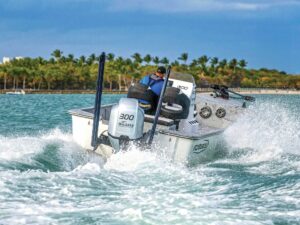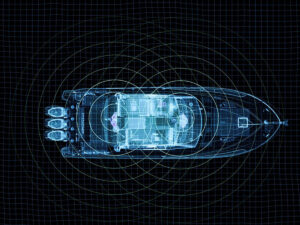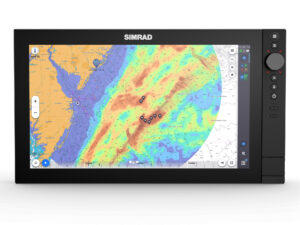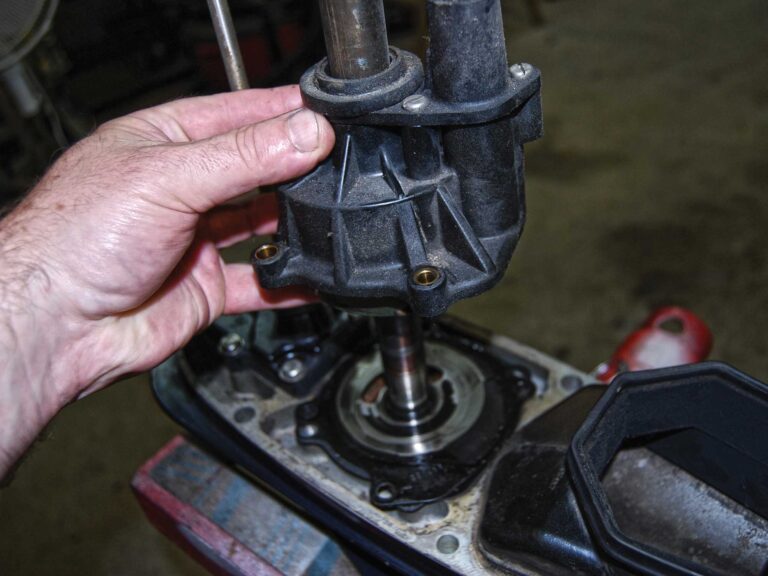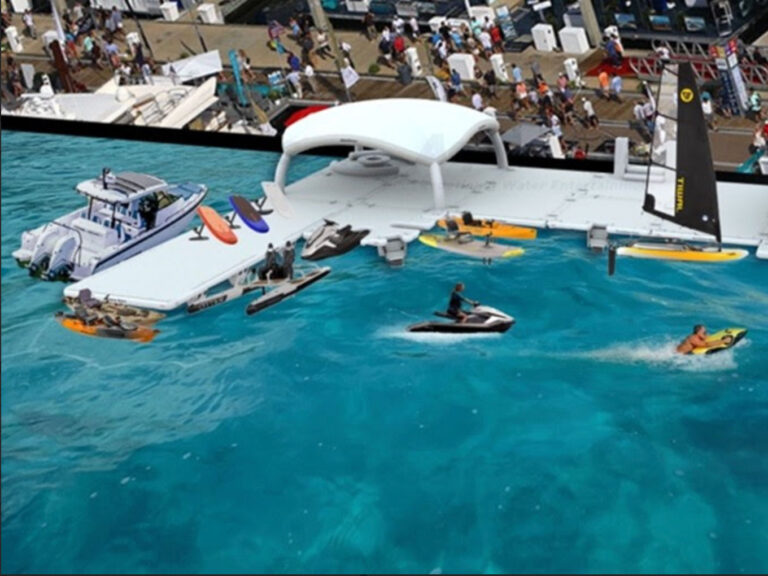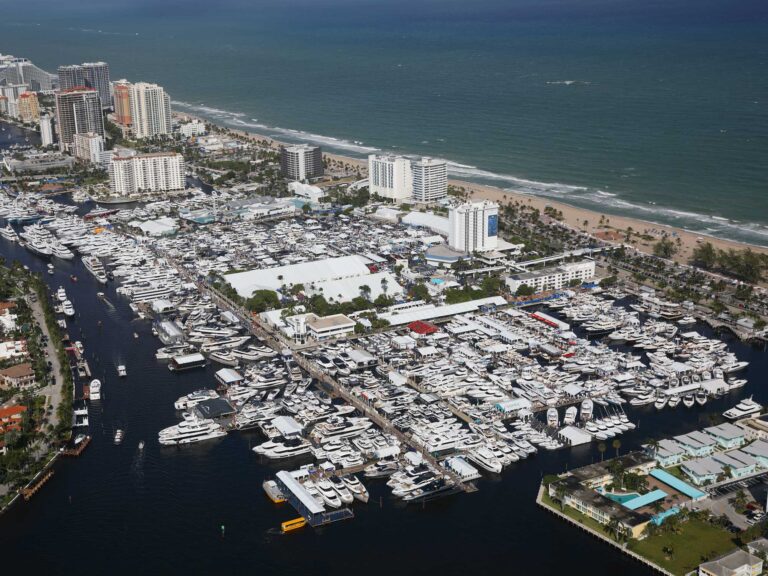Without marine batteries, our engines don’t start, our navigation systems don’t work, our lights don’t illuminate, and our tunes don’t rock. That’s why choosing and caring for your boat’s marine batteries is critical to safety and enjoyment on the water.

Battery Types
Leaving aside specialty Li-ion batteries and archaic gel cells, boaters are presented with two broad types of batteries from which to choose: flooded cell and absorbed glass mat (AGM). Both technologies are available as dual-purpose deep-cycle and starting models, which is what I recommend for most boaters.
Conventional batteries use a liquid acid as an electrolyte to store electricity. These batteries provide ample starting and deep-cycle amperages at the cost of large physical size for the same power compared with AGM batteries. Also conventional batteries can spill acid, injuring boaters and damaging boats. They give off corrosive and potentially explosive vapors during charging. Conventional batteries cost less than AGM batteries, but they last only a third to half the service life of an AGM battery. One reason for this shorter life span (three years, in my experience) is that conventional batteries feature less-robust internal construction. So conventional batteries are cheaper to buy but more expensive to own. They require that the boater periodically check and top off the electrolyte levels in each of the batteries’ cells.

AGM batteries utilize fibrous matting soaked in electrolyte to store electricity. Liquid cannot spill—they can be installed sideways if needed—and they do not typically outgas during charging. Compared with conventional batteries, AGM batteries pack more power in the same size and weight. AGM batteries feature robust internal construction and can take the physical pounding of marine duty better than conventional batteries. AGM batteries cost more, but, in my experience, deliver a service life at least double that of conventional batteries. AGM batteries also hardly self-discharge at all, whereas, conventional batteries often need charging in season. AGMs require no inspection of filling of electrolyte; they are sealed.
AGM batteries might be made with flat plates or in a spiral wound configuration. Of the two, there is usually more room for more electrolyte in the flat plate design because the empty space inherent in six-pack-design batteries means lower plate-surface area, which can mean less power.
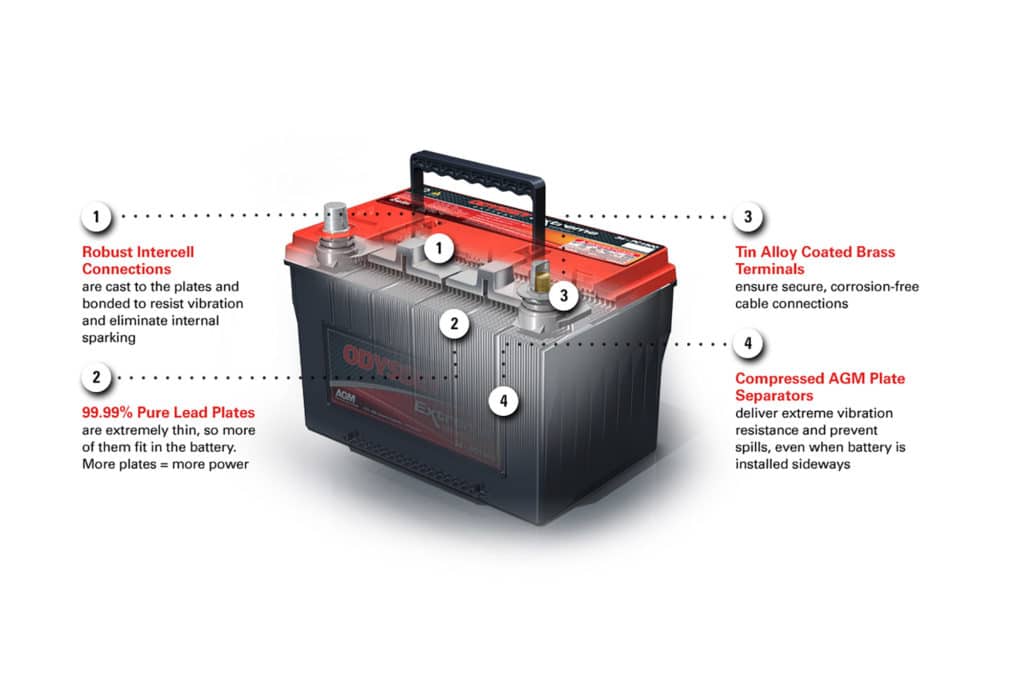
Marine Battery Features
Look for batteries with pure lead plates. Also make sure the battery has threaded marine terminals, not just automotive terminal posts. A sturdy, ergonomic handle should be built-in for installation ease. Find out the way in which the battery manufacturer makes the internal connections. Better marine batteries feature internal connections cast onto the plates, a method that sturdily resists vibration and pounding. Cars and trucks have suspension systems, minimizing vibration, allowing “good” batteries to get away with inferior connections. Never select an automotive battery for use aboard your boat. Check the date code on the batteries you buy to make sure they are not just new, but also fresh.

Recommendation
One thing’s for sure, marine batteries are at the heart of boating. I suggest an AGM battery above a conventional battery for use aboard a boat. The higher price more than pays for itself in longer service life, increased safety and less maintenance.

